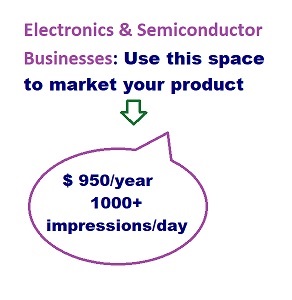Toshiba's Bluetooth SoC consume only 3.2mA for rx and 3.5mA for tx
Date: 09/11/2016
Toshiba has introduced a Bluetooth System-on-Chip (SoC) which is compatible with 4.2 version. Toshiba could decrease the consumption of power by 50% compared to that of the existing such ICs.The new SOC consumes 3.2mA for receive (RX) and 3.5mA for transmit (TX). and the SOC also works on a small size power cell lithium battery by transforming the device into smaller size.
SOC packs radio performance4 matching networks to save the designers from using extra components. This SOC which consumes 3-4mA, of power saves engineers from using bigger batteries, and due to its higher integration it also need lesser external components of only 7 instead of 19, as per Toshiba.
Toshiba has offered three techniques to bring down the power consumption and they are as follows: (1) a receiver architecture configuration suitable for low current consumption; (2) a highly efficient power management system; and (3) low current RF design.
Further explanation Toshiba gives on these techniques are as below;
(1) The receiver architecture introduces a local synthesizer that employs a frequency half that of a conventional receiver, reducing current consumption in the local oscillator. Although the architecture tends to be vulnerable to interference signals because of its complex frequency configuration, a high tolerance to interference is achieved by adopting frequency planning that can avoid folding from cellular signals.
(2) In order to improve power loss in the regulators (LDO: Low Drop Out)5, LDOs are eliminated from the SoC. As performance degradation due to switching noise from a DC-DC converter is a concern, a phase locked loop6 is used to fix the switching frequency of the DC-DC converter and prevent interference with the band used by the Bluetooth low energy.
(3) In low current RF design, so that TX and RX can share a single voltage controlled oscillator (VCO), the frequency tuning range of the VCO must be significantly wide, which increases current consumption. By dividing the VCO for the TX and the RX to narrow the required frequency tuning range for each VCO, low current consumption is achieved. In addition, a switching amplifier technique is introduced in the power amplifier to reduce current consumption.

